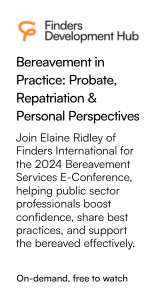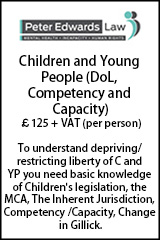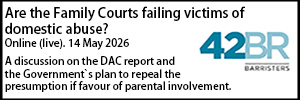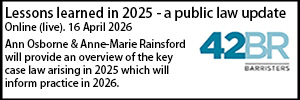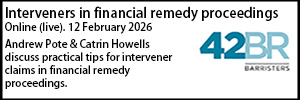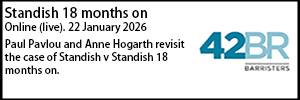High Court orders council to treat asylum seeker in accordance with claimed age until further assessment carried out
- Details
The High Court has granted interim relief requiring Kent County Council to treat an asylum seeker in accordance with his claimed age under the Children Act 1989, pending determination of his age or further order.
In MS, R (on the application of) v Kent County Council [2024], Mr Justice Pepperall concluded that it was “at least arguable” that the Upper Tribunal might find that MS was born no earlier than 29 June 2005, such that he is entitled to support.
On 27 October 2022, MS entered the United Kingdom unaccompanied and claimed asylum.
The judge noted: “He is an Afghan national and asserts that he was born on 25 Mizan 1385 on the Afghan calendar. Such date converts to 17 October 2006 on the Gregorian calendar and so, on his case, he turned 18 the day after the hearing before me.”
Kent County Council carried out an age assessment and concluded that MS was “significantly older” based on his physical appearance, deep voice and “inconsistencies” in his interviews.
By his claim for judicial review, MS challenged Kent’s age assessment - relying heavily on his tazkira, an official identity document issued by the former Islamic Republic of Afghanistan.
Mr Justice Pepperall noted: “Following the age assessment, MS provided evidence to Kent seeking to establish the authenticity and reliability of the tazkira. The local authority is now considering that evidence and reviewing its age assessment. Meanwhile, MS seeks interim relief requiring the local authority to treat him in accordance with his claimed age under the Children Act 1989 pending determination of his age or further order.”
The judge noted that during the local authority’s age assessment, the assessors considered a letter from Elliott Johnson of the National Document Fraud Unit dated 13 September 2023, in which he identified a “number of concerns” about MS’s tazkira.
Mr Justice Pepperall said: “Specifically, Mr Johnson compared the overprint and crest with comparison material and concluded that they had been produced in a different print process. He noted discrepancies in the ink figures of the serial number which he concluded appeared to have been altered from 18002540 to 18992530.
“Further, he considered that the manual entries for MS’s date of birth and age appeared to be in a slightly different ink colour. Mr Johnson observed, however, that he was unable to say whether any alterations had been made officially and that he was unable to comment conclusively on the authenticity of the tazkira.”
The judge noted that a certified translation of the document indicates that it was issued on 25/07/1399, which converts to 16 October 2020.
The certified translation of the entry for MS’s date of birth and age reads as follows: “Based on physical appearance age assessed as 14 years old in 1399. Date of birth: 25/07/1385.”
There is a photograph attached to the tazkira. The assessors described it as of a much younger child.
Mr Justice Pepperall said: “While the assessors rightly noted the unreliability of assessment purely on physical appearance, it is not argued that the tazkira photograph is itself inconsistent with the suggestion that MS was 14 at the time that it was taken.”
Both parties sought to rely on expert evidence in respect of the tazkira. The judge noted that neither party had, however, sought or obtained permission to rely on such evidence.
MS relied on a report by Dr Jaweed Hassan Zadeh dated 13 August 2024. Dr Zadeh is a forensic document examiner with particular expertise in examining Afghan tazkiras.
Dr Zadeh concluded that the tazkira was genuine. In reaching that view, he considered the format, layout, texture and size of the tazkira against known authentic documents. He considered the language, grammar, and use of terminology against what would be expected. He considered the inks, logos, emblems, rubber stamp, signatures and the department which had issued the document.
Dr Zadeh concluded that the tazkira was in the correct format and printed on the standard paper which was used by the Islamic Republic of Afghanistan when issuing tazkiras in 2020.
Dr Zadeh then commented on Mr Johnson’s letter. He reported that the inks were the correct inks that would be used when issuing a tazkira and explained that difference of pressure when applying a handheld stamp can cause the irregularity identified in the serial number.
Dr Zadeh was “heavily critical” of Mr Johnson’s lack of experience in assessing the authenticity of tazkiras, noted the judge.
Mr Justice Pepperall continued: “In my judgment, Dr Zadeh’s expert evidence of his forensic examination of the tazkira is reasonably required to resolve these proceedings and I give permission to MS to rely on his evidence on that issue. I do not, however, give permission to MS to rely on Dr Zadeh’s evidence as to two further matters:
“First, Dr Zadeh and a colleague compared the photograph on the tazkira with MS’s facial features during a video call. They concluded that the photo matched MS’s facial likeness. In my judgment, facial recognition evidence is not reasonably required at this stage since Kent has not sought to argue that the photograph on the tazkira is not one of a more youthful MS. Even if such matter should later be put in issue, any expert evidence on the point would have to come from a facial mapping expert.
“Secondly, he and his colleague tested MS’s knowledge of the Pashto and Dari languages. They found that MS’s linguistic ability and dialects were consistent with MS’s claimed area of origin. Again, such evidence is not reasonably required at this stage since Kent has not challenged that MS is an Afghan national who comes from Laghman province.”
Counsel for the local authority sought permission to rely on an expert report by Elliott Johnson dated 25 September 2024.
Mr Johnson is an Immigration Officer and Specialist Document Examiner employed by the Home Office.
The judge noted: “Mr Johnson questioned the seventh digit of the [tazkira’s] serial number which he concluded, after infrared fluorescence testing, had been manually changed from 4 to 3. He also noted some lesser discrepancy in infrared fluorescence testing of the third and fourth digits.
“Mr Johnson concluded that the tazkira contains an altered serial number but was again unable to comment on whether the alteration had been made officially or not. As in 2023, he confirmed that he was unable to comment conclusively on the authenticity of the tazkira.”
The judge gave permission to Kent County Council to rely on Mr Johnson’s evidence.
Turning to the key issues of the case, Mr Justice Pepperall said: “I acknowledge the detailed and careful age assessment in this case. There are a number of powerful pieces of evidence that support the council’s assessment. Against that, there are a number of factors which, in my judgment, support MS’s case that he was born no earlier than 29 June 2005:
“First and foremost, there is credible expert evidence before the court that the tazkira is a genuine identity document that would have been issued in Afghanistan in 2020. The inconsistency in the serial number does not, as Mr Johnson accepts, allow the court to conclude that it is not authentic or that anyone, other than perhaps the issuing official, has altered the document.
“Secondly, there is some hearsay evidence that a copy of the tazkira can be reconciled with official records held in Kabul.
“Thirdly, it was the Home Office’s initial assessment on 28 October 2022 that, while it disputed MS’s claimed age, this was not a case where MS’s physical appearance and demeanour very strongly suggested that he was significantly over 18.
“Fourthly, while the preponderance of social-worker opinion was that MS was older, the initial impression at Appledore in April 2023 was that MS was under 18.
“Fifthly, the prescription of cream for his acne could suggest that MS was still going through puberty.
“Sixthly, MS’s demeanour might in part be explained by his difficult experience of education in Afghanistan.
“Seventhly, MS’s case might be supported by his apparent vulnerability and evident emotional distress when talking about his more difficult life experiences.
“Eighthly, MS’s independence is explicable by those experiences that meant that he had to look out for himself from a young age.”
The judge highlighted the following October 2015 guidance issued by the Association of Directors of Children’s Services (ADCS), which provides observations on the balance of risk in these cases:
“Social workers are justifiably concerned about the implications of taking an unknown adult into their care, and potentially placing them with vulnerable children. […] The risks of placing a relatively unknown child or young person are mitigated by the fact that they will be supervised, either closely or at least on a regular basis by those employed to care for and support them.
“[…] The dangers inherent in not taking a child into your care are multiple. With regard to their care, a child who is being treated as an adult will not receive the support given by local authorities which is deemed necessary for other children and includes having safe accommodation, the support of a social worker and a foster carer or keyworker/support worker, and support with all the other things a child needs, including access to education and health care.”
The judge noted that in MS’s own evidence, he reported that he felt “very alone and scared” in his hotel accommodation.
He was sharing a room with a much older male who hardly left their room. MS said that he did not have privacy when getting changed. “He suffers nightmares, sleeplessness and anxiety; and asserts that his mental health is deteriorating”, the judge stated.
Kent Council’s own assessment was that MS had experienced “loss and traumatic events” throughout his life, and that he appeared to find sleep a persistent problem.
Mr Justice Pepperall said: “I conclude that the balance of convenience favours interim relief. Accordingly, I order that the local authority should treat MS in accordance with his claimed age under the Children Act 1989 pending determination of his age or further order.”
He added: “It is of course possible that Kent’s current review might identify fresh evidence that supports its earlier assessment. In such event, Kent should have express liberty to apply to set aside or vary my order upon five clear days’ notice following completion of the review of its age assessment.”
Lottie Winson
























